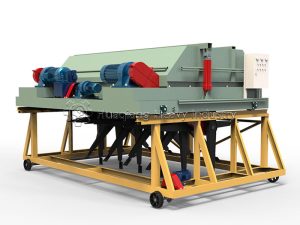The Science Behind Humic Acid Formation
The composting and fermentation processes can significantly increase the humic acid content in organic fertilizers, a phenomenon supported by solid scientific principles. Humic acid is not originally present in large quantities in raw materials but is gradually formed through microbial decomposition and polymerization processes. This transformation converts unstable organic matter into stable humus, with humic acid as the core active component that sees substantial enhancement during fermentation.
Microbial-Driven Transformation Process
Humic acid formation undergoes three key stages: First, microorganisms decompose hard-to-breakdown organic matter like cellulose and lignin in the raw materials, degrading them into small organic molecules. Next, these small molecules undergo oxidative polymerization reactions under the action of aerobic microorganisms, forming humic acid precursors. Finally, these precursors further polymerize into stable humic acid. The entire process resembles microorganisms processing “raw materials” into “refined products.”


Key Factors Affecting Humic Acid Production
Importance of Raw Material Selection
Raw materials rich in lignin, such as straw, sawdust, and wood chips, are optimal choices for humic acid production. These materials can provide sufficient raw materials for microorganisms to convert into humic acid during the fermentation process. In contrast, raw materials dominated by easily decomposable organic matter, such as pure kitchen waste, produce relatively lower amounts of humic acid.
Precise Control of Fermentation Conditions
Aerobic environment, suitable temperature, and proper carbon-to-nitrogen ratio are crucial for efficient humic acid production. The fermentation process requires maintaining a high-temperature period of 55-65°C for 3-5 days while ensuring adequate maturation time. A carbon-to-nitrogen ratio controlled between 25-30 provides optimal conditions for microbial activity.
Adequate Fermentation Duration
Humic acid formation requires sufficient time to complete the transformation from simple molecules to complex polymers. Industrial composting is recommended for no less than 25 days, while home composting requires over 40 days. Adequate fermentation time ensures the conversion of fulvic acid into more stable humic acid forms.
Comparison of Different Fermentation Methods
Aerobic composting demonstrates the most significant improvement in humic acid content, typically increasing it by 5-15 times. In contrast, anaerobic fermentation such as biogas production generates limited humic acid with poor product stability. Although biofertilizer fermentation uses carriers rich in humic acid, the fermentation process itself hardly produces new humic acid.
Humic acid content serves as an important indicator for assessing organic fertilizer quality. Well-matured organic fertilizers necessarily contain abundant humic acid, while products with low humic acid content often indicate insufficient fermentation or improper raw material selection. Through scientific composting processes, we can not only achieve resource utilization of organic waste but also produce high-value-added quality organic fertilizers.
Optimizing Humic Acid Production Through Advanced Composting Technologies
The scientific enhancement of humic acid content during the organic fertilizer fermentation process represents a crucial quality improvement in modern organic fertilizer manufacturing. Advanced fermentation composting technology for organic fertilizer utilizes specialized equipment like the trough-type compost turner, large wheel compost turner, and chain compost turning machine to maintain optimal aerobic conditions for humic acid formation. These compost turning machine systems are essential components in the equipments required for biofertilizer production, ensuring efficient Windrow composting and proper organic fertilizer fermentation conditions that maximize humic acid development.
Following the composting phase, complete fertilizer production machine systems utilize granulation equipment such as the rotary drum granulator to transform humic acid-rich compost into uniform granules. The integration of these technologies into comprehensive bio organic fertilizer production line configurations enables manufacturers to produce high-value organic fertilizers with enhanced biological activity. The hydraulic trough compost turner provides particularly effective turning for large-scale operations focused on maximizing humic acid content through precise process control.
While npk fertilizer production line operations focus primarily on chemical nutrient balance, the principles of humic acid optimization demonstrate how organic and chemical fertilizer production can benefit from shared scientific understanding. From initial composting using chain compost turner equipment to final processing through disc granulation production line systems, the strategic enhancement of humic acid creates superior organic fertilizers that improve both soil health and crop productivity through natural mechanisms.